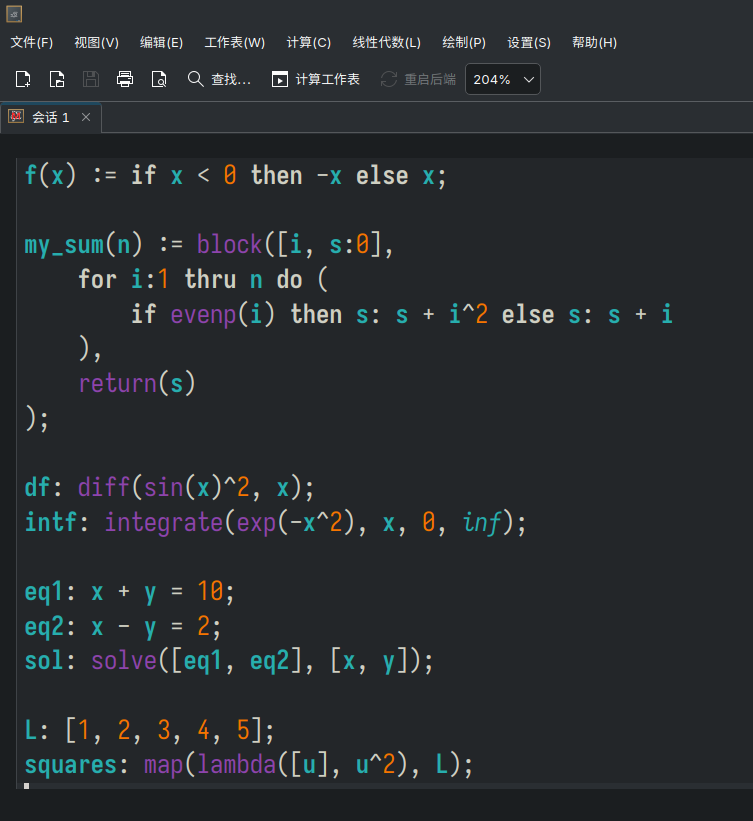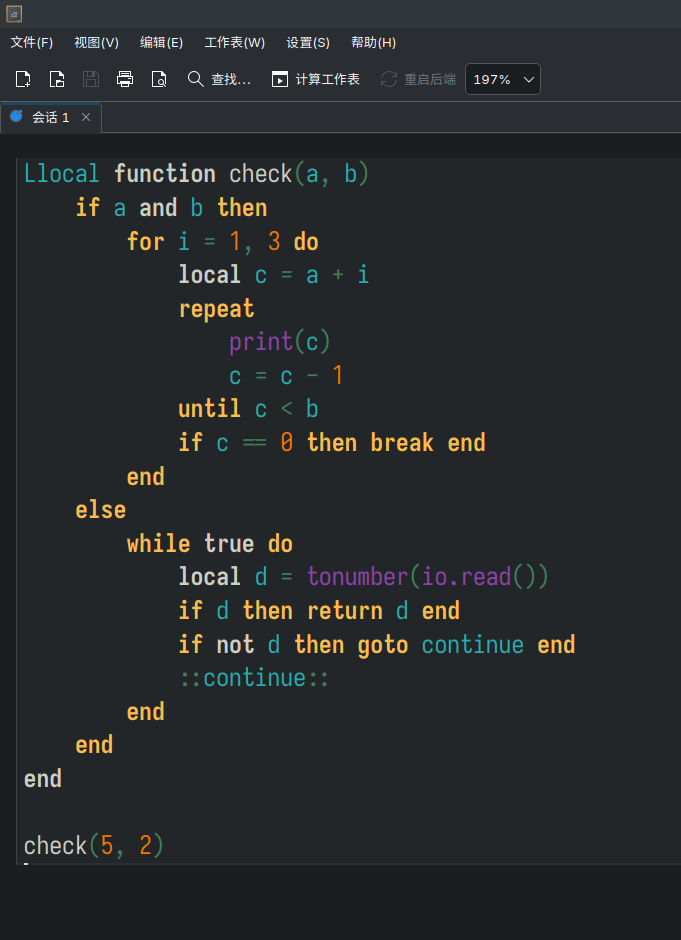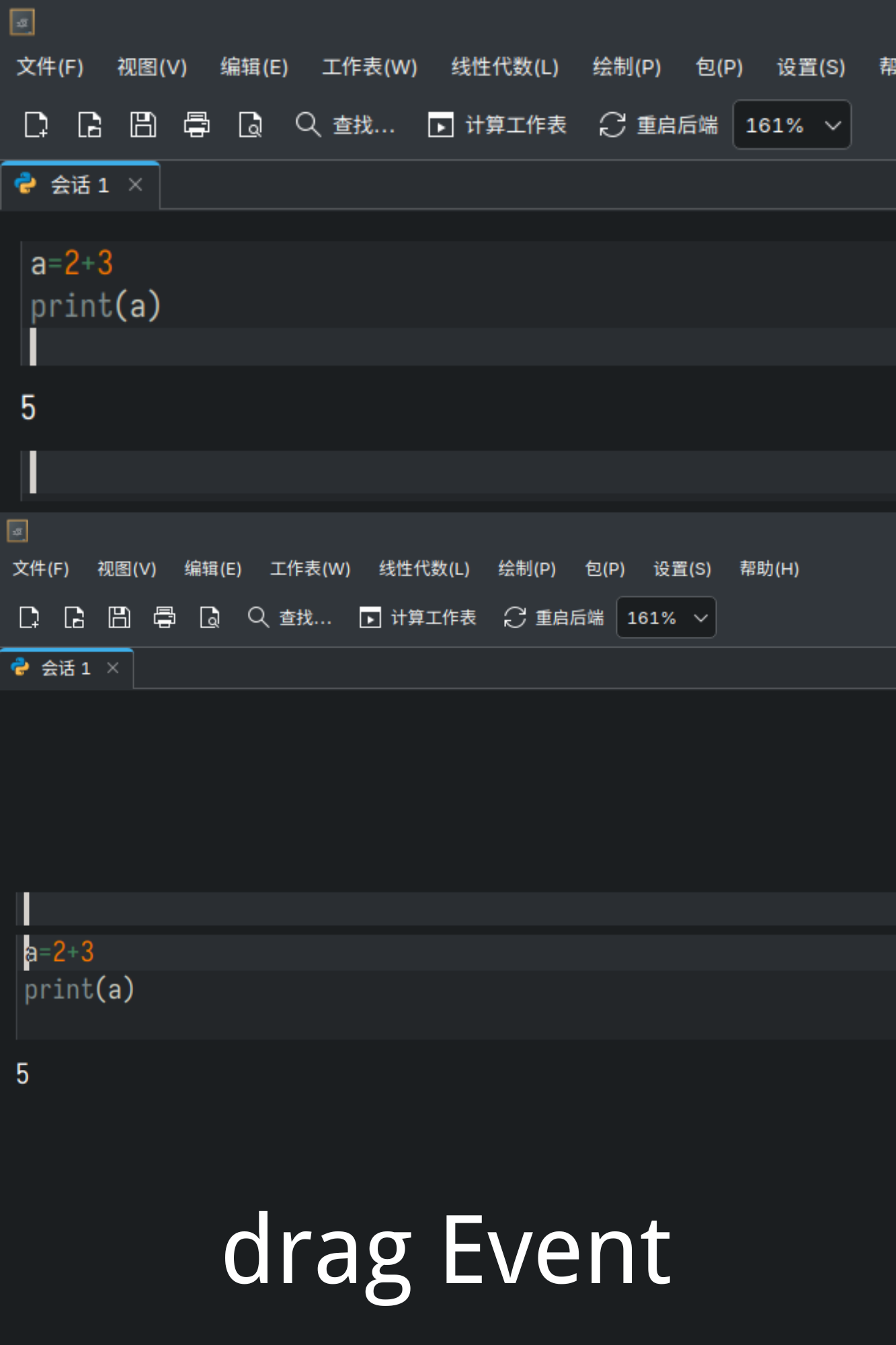Integrate KTextEditor into Cantor
Project Introduction
Cantor is a powerful scientific computing front-end in the KDE ecosystem, providing users with a unified and friendly interface for mathematical and statistical analysis.
Currently, Cantor’s worksheet cells are based on a custom implementation using QTextDocument. While this approach meets basic needs, it has revealed its limitations in terms of feature expansion and long-term maintenance. To fundamentally enhance the editing experience, simplify the codebase, and embrace the advanced technology of the KDE Frameworks, this project plans to deeply integrate the feature-rich KTextEditor component into Cantor, completely replacing the existing cell implementation.
This core upgrade will bring a suite of long-awaited, powerful features to Cantor, including:
- Enhanced Multi-line Editing: Significantly improves the editing experience for complex, multi-line code blocks. This includes more robust syntax highlighting, accurate bracket matching, and a more stable editing environment, resolving key issues present in the current implementation.
- Vi Mode: Provides native Vi-style text editing for users accustomed to Vim’s efficient workflow, significantly improving editing speed.
- Improved Syntax Highlighting: Supports more comprehensive and precise code coloring rules, making complex mathematical and programming expressions clearer and easier to read.
- Smart Auto-indent: Enhances code formatting capabilities, making it exceptionally convenient to write structured scripts and multi-line formulas.
- Code Completion: Intelligently suggests variables, functions, and keywords, thereby speeding up input and reducing syntax errors.
- Spell Check: Ensures the accuracy of text comments and documentation, which is crucial for writing rigorous formula explanations and reports.
By integrating KTextEditor, Cantor will not only optimize the user’s workflow but also reduce code redundancy and improve the project’s overall maintainability. This move will further strengthen the Cantor and KDE ecosystems, providing users with a smoother and more unified experience across different KDE applications.
Why this is needed
As scientific computing demands become increasingly complex, a modern, full-featured editor is essential for boosting productivity. The current custom implementation has become a bottleneck hindering Cantor’s future development:
- High Maintenance Cost: Maintaining a custom editor component consumes significant development resources and struggles to keep pace with the advancements in modern editors.
- Difficult to Extend: Implementing complex features like Vi mode or advanced code completion on the existing architecture is akin to “reinventing the wheel”—it’s inefficient and prone to introducing new bugs.
- Failure to Leverage the Ecosystem: The KDE Frameworks already provide the very mature and powerful KTextEditor component. Not utilizing it is a waste of available resources. Integrating KTextEditor means Cantor can directly benefit from the years of effort and refinement the entire KDE community has invested in this component.
Current Status: Phase 1 Complete
The first phase of the project has been completed. We have successfully introduced Cantor into the core of KTextEditor and achieved the following key results:
Core replacement completed:We created a new
WorksheetTextEditorItemclass, which acts as a proxy forKTextEditor::View, successfully replacing the oldQTextDocument-based cell implementation.Basic functions available:Users can already perform basic operations such as text input and code execution in the new cells, proving the feasibility of the integration solution.
- short text

- multi-line display
.png)
integration of KTextEditor features:Basic syntax highlighting and text editing features are now available in new cells.
Python

Maxima

Lua

Event Handling and UI Interaction: Core user interactions such as mouse events and drag-and-drop functionality for worksheet entries are working as expected within the new framework.
drag

shotcut key

The Road Ahead: The Plan for Phase 2
With the foundation now firmly in place, the second phase of the project will focus on unlocking the full potential of KTextEditor and refining the user experience. The planned work includes:
- Activating Advanced Editor Features: We will progressively enable and configure KTextEditor’s sophisticated features, including Vi Mode, integrated Spell Check, and smart indentation rules, ensuring they are seamlessly integrated into the Cantor workflow.
- Connecting Backend-driven Code Completion: A major goal is to connect Cantor’s various computation backends (e.g., Python, R, Octave) to the KTextEditor code completion framework. This will provide users with context-aware, intelligent suggestions.
- Bug Fixing and UX Polishing: We will systematically address any remaining issues from the initial integration, focusing on perfecting UI/UX details like focus management, text selection, and context menu consistency.
- Comprehensive Testing: Rigorous regression testing will be conducted across all features—new and existing—to guarantee the stability and reliability of Cantor following this major architectural upgrade.
